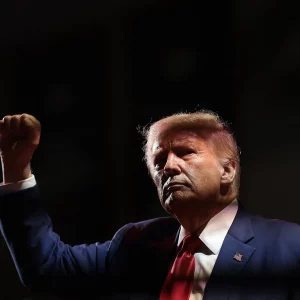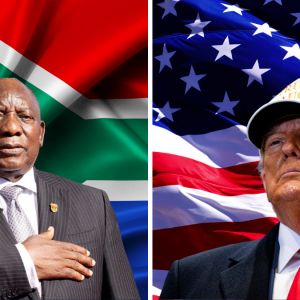When the USS Carl Vinson made a port call to Da Nang, Vietnam last year, reactions both within the US and abroad were mixed. US government statements were muted, emphasizing the role of port visits in routine diplomacy but also linking them to ongoing freedom of navigation operations. Chinese state media generally issued condemnations of the move but had a curiously strong focus on how it was a manifestation of Vietnamese, and not American, nationalism. Russian state media, amusingly, went to great lengths to emphasize how meaningless the visit was, a statement which lends itself to endless psychoanalysis. Clearly, Vietnam’s strategic position is both unusually complicated and a sensitive topic of discussion.
This eminently confusing situation has its roots in the process of Vietnamese independence and the country’s maneuvering throughout the Cold War. Soviet assistance flowed into Vietnam as soon as the Viet Minh guerrillas organized against the Japanese. After the Chinese Civil War ended in 1949, the new Communist state directed aid to the Viet Minh as well, and the group achieved increasing success against the French.
After the French withdrawal and the division of Vietnam, the US funneled massive quantities of military and economic aid to the South with the goal of holding back the perceived advance of Communism in the region. That aid gradually increased as the Vietnam War proper began, but ground to a halt in 1972 as a result of domestic political pressure. Throughout the latter period of the war, both Russia and China provided aid to the North but had inimical relations with each other, and relations between China and Vietnam were increasingly hostile as the latter drew closer to Russia.
In 1978, after the North had unified Vietnam, it invaded Cambodia to remove the Chinese-backed government there, and China retaliated in 1979 with a massive invasion that ended inconclusively but with massive losses on both sides. During this same period, the US moved closer to China and détente with the Soviets broke down. The collapse of the Soviet Union and the resolution of issues in Cambodia in 1990 removed the major sticking points in China-Vietnam relations, and the countries resumed ties in 1991. Official ties between Vietnam and the US resumed in 1995.
Since that point, Vietnam has been engaged in an increasingly complicated balancing act between the three powers. It is surely unique in that regard: even among states without a noted preference for one of the three, most need only concern themselves with balancing two major powers against each other. Each of the bilateral relationships is important and brings distinct advantages – sufficient enough advantages that abandoning anyone completely would be unwise.
The US has clear and vested interests in countering China’s territorial claims, as well as offering a major trade opportunity – it serves as a vast market for Vietnamese industrial products, and with the Obama administration’s decision to lift the ban on arms sales, could be a major military supplier as well. China is also an increasingly important trade partner, making use of Vietnamese foodstuffs and consumer goods and supplying industrial equipment, chemicals, and funding for infrastructure development. Russia, Vietnam’s longest-running ally, still supplies most of the country’s imported military equipment, and moreover appears to have far more muted ambitions for its geopolitical role in the Pacific than either China or the United States, making it less likely to constrain Vietnamese policy.
The pursuit of closer relations with the US, while an opportunity, offers a unique set of challenges for Vietnam as well. Even with a friendlier trade and military relationship, the US is unlikely to cease its pointed criticism of Vietnam’s human rights record, and while not exactly a revelation, this remains inconvenient. More importantly, Vietnam is likely to learn that the US is not exactly the ideal hedge against China that it may be expecting. US freedom to act is constrained by the indispensability of its close trade relations with China, and the status of the “Pivot to Asia” – and with it the level of emphasis put on maintaining friends in the region – remains fairly ambiguous.
Generally, it is an open question of whether the US would act decisively against a major threat to Vietnam. A formal alliance or greatly enhanced trade relations would likely serve as more powerful motivations to safeguard Vietnamese interests, but the former would be politically risky for both sides and the latter is, at best, unlikely in the current domestic political climate. China’s reaction to more public relations with the US would be unpredictable, and potentially quite damaging to the Vietnamese economy; it might even be emboldened to enforce its position in territorial disputes more aggressively. Russia, despite its distinctly blasé reaction so far, certainly has much to lose from American encroachment in relations with Vietnam, but in the absence of official statements or a coherent Russian policy in the Pacific, potential actions are difficult to predict. That said, the United States simply can not have realistic ambitions to unseat Russia from its position of influence in Vietnam, and as long as all sides are vaguely aware of this fact, Russia is unlikely to feel a real threat.
Vietnam’s relationship with China is clearly the tensest aspect of its international position, but on a basic level, China has more obvious and more clearly signaled motivations than Russia or the United States. Trade between the two countries is expected to reach $100 billion in 2018 and has grown at an impressive rate compared to that between China and other ASEAN countries. That trade is not necessarily irreplaceable for China, but Vietnam’s proximity and complementary industries make it attractive, and the major steps taken to improve infrastructure connections indicate how highly China values it. Of course, China is an indispensable partner for Vietnam, by far its largest source of imports and second only to the United States as an export destination. It is undeniable that these ties are partly responsible for Vietnam’s impressive growth, but they are also a source of leverage on issues of interest to China, mainly the lingering territorial disputes in the South China Sea. Principally, these involve the Spratly and Paracel island chains; the former holds both Vietnamese- and Chinese-occupied islands, and the latter has been entirely under Chinese control since 1974 when PRC warships forcibly expelled a South Vietnamese fleet. China’s military development of its holdings in both areas has drawn recent attention but does not represent a major change in the status of its claims, simply a more confrontational statement of them.
That change in posture has been accompanied by enhanced diplomatic efforts to halt Vietnamese economic activity in disputed territories. China has exerted particularly strong pressure against offshore oil and gas projects, to the extent that Vietnam’s state-owned oil company was compelled to acknowledge the impacts of “uncertainty” on its future prospects. Both the Spratly and Paracel chains have substantial suspected oil and gas reserves, and China’s motives in discouraging Vietnamese efforts are clear. Vietnam’s priorities are far murkier. China has gone so far as to impugn Vietnam’s rights in its EEZ, and this could provide a route to arbitration proceedings similar to those launched by the Philippines. That said, the decision in favor of the Philippines was totally unenforceable, and China’s threats to attack Vietnamese holdings indicate that US or potentially Russian backing would be needed to allow Vietnam to successfully assert its rights. Russian assistance, as noted below, is unlikely, and US assistance would be difficult to secure and seen as extremely threatening by China. Moves like the Carl Vinson port call are likely to be the furthest extent of US overtures in the near future, and that action was both intensely criticized by China and insufficient to give Vietnam the confidence to stand up to China on oil issues.
Vietnam’s ties with Russia are both more straightforward and less predictable than its other relationships. Unlike China, Russia has no major regional interests that compromise Vietnam’s own, and unlike the United States, has no major baggage from past tensions that might compromise relations. So far, public diplomacy has emphasized military ties and arms sales; economic and cultural relationships between the two countries are not remotely as strong as those that existed before the collapse of the Soviet Union. Still, the relationship should not be underestimated merely because its public manifestations are one-dimensional – Vietnam is the world’s eighth-largest arms importer and a critical market for Russia, buying nearly as much as China and (unlike China) incapable of substituting domestically produced equipment for Russian imports. Indeed, China is moving rapidly towards self-sufficiency and Russian revenues from arms exports are stagnant, making Russia more reliant on other partners even as it becomes more reliant on arms sales to substitute for declining oil revenue. Both China and the United States appear relatively untroubled by these ties, partly because they have no realistic hopes of competing with Russia directly for influence in Vietnam, but also because Vietnam has so far pursued policies that avoid overt shows of Russian influence. After allowing Russia’s lease on the Cam Ranh Bay naval base to lapse in 2003, Vietnam has declared its stringent opposition to entering military alliances or hosting foreign bases. Instead, it has allowed ships from over a dozen countries to make port calls at Cam Ranh, showing the diversity of its soft power ties and relying on China and the United States to hedge each other, with great success.
However, any discussion of competition that discounts Russia’s role is incomplete. Too often, it is treated as a junior partner of China in competition with the United States. But the general acceptance of Russia-Vietnam ties gives both countries an opening. Traditionally, Russia has accepted China’s dominant role in Asia, but an article from the Economist in 2016 postulated that Russia’s degree of interest in Asia is dependent on its international position elsewhere. At the time, the situation in Ukraine weighed most heavily on Russia’s ties to the West, and the article predicted a concerted attempt by Russia to score highly visible diplomatic successes in Asia, more to demonstrate that Western sanctions have not succeeded in isolating it than anything else. Russia’s diplomatic overtures at that time were not groundbreaking, but with fresh recriminations between Russia and the West in the past six months, more are likely on the horizon. If Russia again looks to Asia for diplomatic success, Vietnam may have its opening. It could seek favorable arms deals, continuing its military modernization and gaining access to the latest in Russian products. If planned carefully, joint military exercises could send a message to China that Vietnam is under implicit Russian protection, while allowing Russia to remind the world that it has channels of influence in Asia.
The many dilemmas and concerns facing the architects of Vietnam’s foreign policy should not be allowed to completely overshadow the unique opportunities of its position. Of course, most of these concerns owe their existence to the fact that each of the three powers in question recognizes that Vietnam’s existence offers them a significant opportunity in turn. The first priority for Vietnam must be to prevent any of the three from using the threat of force to interfere with Vietnamese interests. At the moment, only China seems likely to attempt anything of this kind, and both Russia and the United States could serve as hedges; if it is impossible to pursue this type of relationship with both, Russia is the appropriate choice in the short-term.
For obvious reasons, Russia is not concerned about further alienating the United States, and its willingness to offend China is dependent on its desperation. Neither of those powers can afford to cut ties with Vietnam for fear of allowing the other to move in, and that situation is ideal from the Vietnamese perspective. If diplomatic backlash did occur, it would more likely be directed at Russia, which would not be troubling to Vietnam. It would likely not perturb Russia either – its relationship with the West cannot get worse, and it has no interests in Asia for China to threaten except Vietnam, which China cannot exert much more pressure on without sending it into the US camp.
However, Russia is not a sufficient long-term partner, since it cannot meet all of Vietnam’s needs. Russia is useful as a supplier of military equipment but simply is not a large or diverse enough economy to be a more broadly useful trade partner, and its interests in Asia are ultimately fairly shallow and moreover, unreliable. Given this, further economic integration with China is likely the best choice at the moment. China’s proximity, the naturally complementary trade relations that exist now, and its evident willingness to take up the slack in Vietnam’s infrastructure needs make it the most attractive partner. In the longer term, though, Vietnam must be careful to prevent this relationship from developing into a dependence, as strong Chinese economic leverage would be generally detrimental. The United States is another valuable trade partner and has no prominent strategic contentions with Vietnam, but the relationship must deepen and develop before any predictions can be made. The position of the United States as a natural long-term ally of Vietnam depends on its commitment to the Pacific and the details of its strategy there.
Ultimately, there is a splendid opportunity developing. If Russia truly seeks a show of influence in Asia, Vietnam can oblige; with shrewd negotiation, it can obtain favorable deals. Enhanced ties would remind China that Vietnam is not a country that can be pushed around without consequence, but would not permanently alienate China or the United States since both powers have vested interests in not ceding influence to the other and in maintaining trade. Russian commitment is likely to falter eventually, but by then Vietnam will have reaped the benefits of its ties with all three countries, and will still be well positioned to balance China and the US against each other.
Featured Image Source: Flickr/U.S. Navy






Be First to Comment